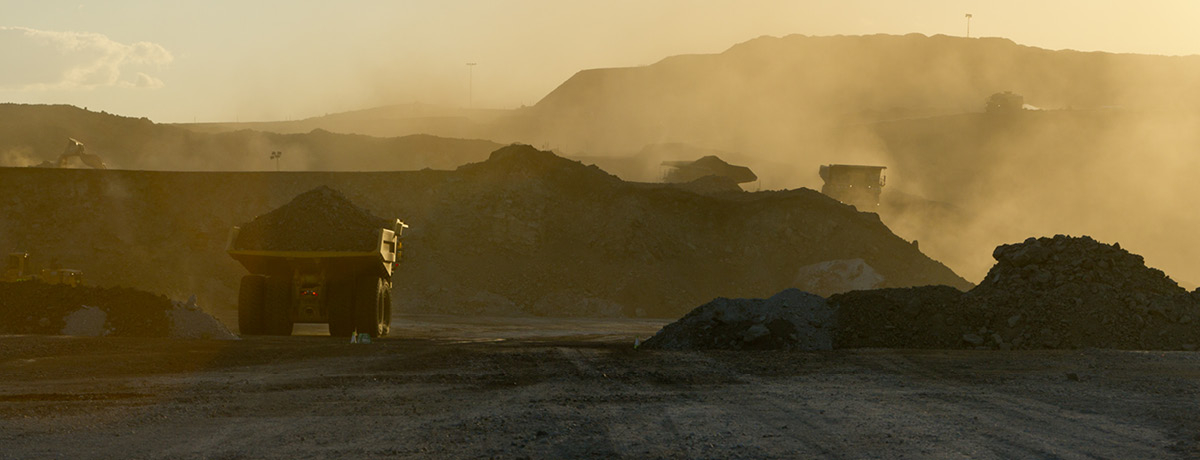On 27 May 2021, Justice Mordecai Bromberg of the Federal Court of Australia handed down the decision in Sharma by her litigation representative Sister Marie Brigid Arthur v. Minister for the Environment. The question put to the court was whether the Minister for the Environment owed Australian children a duty of care when exercising her power under the Federal Environment Protection and Biodiversity Conservation (EPBC) Act of 1999. The court answered in the affirmative—the first judgment of its kind in the world—recognising a novel duty in the tort of negligence for the foreseeable harm of climate change.
Background
In 2014, the Whitehaven Coal company was granted development consent under the New South Wales Environmental Planning and Assessment (EPA) Act of 1979 for a coal mine, the Vickery Coal Project, in northern New South Wales. Whitehaven obtained the relevant approvals for the project, but coal production at Vickery has yet to begin. The project occupies a site within the Gunnedah and Narrabri local government areas, approximately 25 kilometers north of Gunnedah in New South Wales. In early February 2016, Whitehaven applied to the Commonwealth Minister for the Environment to expand and extend the project under the EPBC Act.
Vickery Coal, the second respondent in this case, is a wholly owned subsidiary of Whitehaven and replaced it as the proponent of the Extension Project on 17 July 2018. If approved, the Extension Project would, among other things, increase total coal extraction from the mine to 168 million tonnes (Mt), from 135 million. When combusted, the additional coal extracted from the Extension Project will produce about 100 Mt of CO2. The NSW Independent Planning Commission (IPC) assessed the Extension Project and, on 12 August 2020, granted development consent subject to certain conditions. Two days later the development consent, along with the NSW Department Report recommending approval, was provided to the Commonwealth Minister for the Environment, Sussan Ley MP, for final approval under the EPBC Act.
The proceedings began on 8 September 2020. The applicants claimed that Ley, the first respondent, owed them and other Australian children a duty of care to avoid harm or injury when exercising her discretion to grant final approval of the Extension Project under the EPBC Act. Broadly, in assessing whether a duty of care exists, the law of negligence focuses on the foreseeability of harm and the relationship between the person who has caused or contributed to the harm (or will do so) and the persons who have been, or may be, harmed.
They also sought an injunction to restrain the Minister from granting the EPBC Act approval due to an apprehended breach of that duty. On 8 February 2021, Vickery joined as second respondent for the limited purpose of participating in relation to the application for an interlocutory injunction brought by the applicants.
Findings of the Federal Court: May 2021
Justice Bromberg engaged in extensive analysis of the law of negligence, going back as far as the 12th century. The power to cause harm, he observed, increased as society modernised—and as a result the law of negligence and duty of care had expanded to encompass these changes overtime. The judge acknowledged the willingness and appropriateness of the common law to respond to changing social conditions, including those brought about by the increasing ability of humans to harm one another. As a result, he found that the law could intervene to create a novel duty of responsibility of today’s adults toward those of tomorrow.
SALIENT FEATURES
The applicant relied on four key factors to support its argument that a sufficiently close relationship existed to give rise to a duty of care obligating the Minister to make reasonable efforts to avoid harm or injury to children:
• the degree and nature of control the Minister could exercise to avoid harm;
• the vulnerability of the children;
• the reasonable foreseeability and nature of the harm; and
• the recognised category of a relationship between the Minister and children.
Justice Bromberg ultimately concluded that each of these features supported the recognition of a duty of care. Let’s look at two in particular.
Reasonable foreseeability: The judge considered that a general inquiry was necessary to ascertain whether a reasonable person in the position of the Minister could foresee that the approval of the Extension Project would expose Australian children to potential harm or personal injury. In this case, the applicants did not allege a direct link between the Minister’s conduct and the personal injury, but rather that there were a series of steps between the Minister’s conduct and each category of the harm alleged:
1. The Minister lifts the statutory prohibition enabling Vickery to extract the additional 33 Mt of coal from the Vickery mine. Approval by the Minister is assumed.
2. Vickery extracts the coal, which results in its sale and combustion, and consequential emissions of CO2 into the atmosphere.
3. The emission of CO2 will increase global average surface temperature.
4. The increase in global average sur face temperature leads to greater frequency or gravity of extreme climatic events such as heat waves or bush fires, which increases the risk of harm.
Expert evidence was adduced by the applicant from Dr Mallon, Dr Meyricke, Professor Capon, and Professor Steffen in their capacity as leading event attribution and climate science experts. The judge was satisfied based on this evidence that “a reasonable person in the Minister’s position would foresee that, by reason of the effect of increased CO2 in the Earth’s atmosphere and the consequential increase in global average surface temperature, each of the Children is exposed, through the occurrence of heat waves or bush fires, to the risk of death or personal injury.”
In coming to this conclusion, the judge accepted that the contribution to the risk of exposure to harm from the approval of coal extraction from the Extension Project could be characterised as “tiny.” However, in the context of a real (if unlikely) risk that the planet could warm by 4°C above pre-industrial temperature levels by about 2100, the Minister’s prospective contribution was not so insignificant as to deny a real risk of harm to children.
Bolstering this conclusion was the requirement of the Minister under Section 136(2)(a) of the EPBC Act to take into account principles of ecologically sustainable development listed in Section 3A, which includes the precautionary principle “if there are threats of serious or irreversible environmental damage, lack of full scientific certainty should not be used as a reason for postponing measures to prevent environmental degradation.”
The power to cause harm, he observed, increased as society modernized—and as a result the law of negligence and duty of care had expanded to encompass these changes over time."
Justice Bromberg noted that “this is a case where the foreseeability of the probability of harm from the defendant’s conduct may be small, but where the foreseeable harm, should the risk of harm crystallise, is catastrophic. The consequent harm is so immense that it powerfully supports the conclusion that the children should be regarded as persons who are ‘so closely and directly affected’ that the Minister ‘ought reasonably to have them in contemplation as being so affected when . . . directing [her] mind to the acts . . . which are called in question.’ Accordingly, “reasonable foreseeability” is a strong salient feature in support of the posited duty of care being recognised by the law of negligence.
The degree and nature of control: Unlike other negligence cases concerning nonfeasance (the failure to exercise power), this case related to the positive exercise by the Minister of a power that creates a real risk of harm. Justice Bromberg found that because of the functions conferred on the Minister, including the exercise of discretion under the EPBC Act, the Minister has substantive, almost exclusive control over the foreseeable, real risk of harm.
The Relationship Between a Novel Duty and the Statutory Functions Under the EPBC Act
The Minister contended that the imposition of a novel duty would amount to incoherence with her exercise of power because it would be inconsistent with the statutory task required of her by Sections 130 and 133 of the EPBC Act and would impose a consideration not contemplated within the legislation. In addition, the Minister contended that the duty would require that the avoidance of harm to the children would, in effect, be elevated to a mandatory and paramount consideration, and would therefore distort the Minister’s discretion.
In considering and ultimately rejecting this argument brought by the Minister, Justice Bromberg noted that “the EPBC Act’s promotion of decision[1]making processes that ‘effectively integrate both long-term and short term economic, environmental, social, and equitable considerations highlights an intent that competing considerations be assessed and that a balance be struck between them.” He further observed that “liability in negligence may cut across, impair, or dictate the exercise of a statutory discretion (including an approval power) without incoherence being observed.”
With respect to the exercise of her functions under Sections 130 and 133, the judge expressly disagreed with the Minister, instead finding that
“ Human safety is a relevant mandator y consideration in relation to a controlled action which may endanger human safety. In relation to a controlled action of that kind, the lives and safety of the Children are not optional considerations but have to be taken into account by the Minister when determining whether to approve or not approve the controlled action. That implication is found in the ‘subject-matter, scope and purpose’ of the EPBC Act. . . . The EPBC Act’s purpose is in part protective of people and communities as a defined part of the environment. It is impossible to accept that if the Minister was called upon to approve or not approve an activity which potentially endangers human safety—for example, the extraction of asbestos from a new mine—the scheme of the EPBC Act would permit the Minister to choose freely whether or not she should consider human safety in making her decision.”
In what commentators are calling a world first, Justice Bromberg held that a duty of care should be recognised, namely that the Minister owes a duty to take reasonable care not to cause the children plaintiffs’ personal injury (from climatic hazards brought about by increased temperatures due to climate change) when exercising her power under Sections 130 and 133 of the EPBC Act to approve or not approve the Extension Project.
Nonetheless, even though he found there was a (novel) duty of care, the judge dismissed the plaintiffs’ application for an injunction because the Court wasn’t satisfied that a reasonable apprehension of breach of the duty of care by the Minister had been established. The applicants did not satisfy the Court that the extent of the restraint they seek was justified.
Orders of the Federal Court: July 2021
Justice Bromberg subsequently heard from parties on the form of declaration that should be made. On 8 July 2021, his Honour made final orders as follows:
1. The first respondent has a duty to take reasonable care, in the exercise of her powers under Sections 130 and 133 of the EPBC Act in respect of referral EPBC No. 2016/7649, to avoid causing personal injury or death to persons who were under 18 years of age and ordinarily resident in Australia at the time of the commencement of this proceeding arising from emissions of carbon dioxide into the Earth’s atmosphere.
2. The proceeding not continue as a representative proceeding in respect of persons who were under 18 years of age and not ordinarily resident in Australia at the time of the commencement of this proceeding.
3. The Minister pay the applicants’ costs of the proceeding.
While the recognition of this duty is novel in Australia, the final orders apply the duty narrowly to the EPBC Act referral for this particular case (referral EPBC No. 2016/7649). Nonetheless, it is highly likely that this novel duty of care would also be held to apply to other fossil-fuel or greenhouse-intensive developments determined by the Minister in the future. As a result, in the absence of a successful appeal by the Minister, it is expected that the Minister will consider it necessary to apply the duty of care to all future determinations of the majority (if not all) of proposed mining projects involving the extraction of coal.
Recent Dutch Case Law: Urgenda and Royal Dutch Shell
The Urgenda case (spanning 2015 – 2020) posed similar novel questions: whether the Dutch State was obliged to formulate and take specific actions to reduce, by the end of 2020, the emission of greenhouse gases originating from Dutch soil by at least 25 per cent compared to 1990, and whether courts can order the state to do so. On 20 January 2020, the Supreme Court and Hague Court of Appeal handed down the Urgenda decision, ruling that the Dutch State did owe a duty of care to protect the human rights of its citizens, and therefore did have to take appropriate action to mitigate the existential threat of climate change.
On 26 May 2021 (the day before the Sharma decision), the Hague District Court handed down Milieudefensie et al. v Royal Dutch Shell, ruling that Royal Dutch Shell must reduce its Scope 1, Scope 2, and Scope 3 emissions by 45 per cent by 2030 (relative to 2019 levels) due to an unwritten standard of care found in the Dutch Civil Code and in the protection of human rights under EU law. This reduction is to be achieved through Shell’s corporate policy and applies to the Shell Group’s entire energy portfolio.
Interestingly, in its interpretation of the unwritten standard of care, the Hague District Court included the “internationally propagated and endorsed need for companies to genuinely take responsibility for Scope 3 emissions.” Unlike Scope 1 and 2 emissions which link directly from a project, Scope 3 emissions capture all indirect upstream and downstream emissions in the value chain of the reporting entity (but are not emitted by the reporting entity). Included in this finding was a “significant best-effort obligation” owed by the Shell Group as a whole (and not just the entity subject to the proceeding) to take the necessary steps to remove or prevent the serious risks ensuing from the CO2 emissions it generates, and to use its influence to limit any lasting consequences as much as possible. This obligation is not removed or reduced by the individual responsibility of the business relations and end users of their own CO2 emissions. Although Shell has indicated in a public statement that it will appeal this decision, if the appeal process in Urgenda is anything to go by, the original decision may well stand.
Parallels Between Dutch and Australian Case Law
The Right to Life: The applicants in the Shell case invoked the right to life, with the Hague District Court confirming that due to the precedent of the Urgenda decision in 2019, Article 2 offers protection against “the consequences of dangerous climate change due to CO2 emissions-induced global warming.” In Australia, a country without a national human-rights framework and with only limited state and territory legislation protecting human rights, considerations of the right to life (though not so expressed) came in Sharma via the tort of negligence and foreseeable harm and statutory construction of the EPBC Act. In coming to his decision, the judge directly contemplated the positive duty of a Minister to protect life in circumstances of alleged harm due to climate change. While not specifically expressed as a human right, in substance, the obligation can be said to be the same.
Collective action: Both the Australian and Dutch courts observed that because climate change is a worldwide problem, and because resource companies cannot solve the problem on their own, collective action is required. In interpreting the Dutch Code’s unwritten standard of care, the court adopted the United Nations Guiding Principles on Business and Human Rights (UNGPs), including the duty of companies to respect human rights and operate with diligence. This demonstrates a trend within Europe of increased focus on environmental, social, and governance (ESG) principles, including greater application of the UNGPs to businesses within a court setting. In the Australian decision of Rocky Hill in 2019, Chief Judge Preston’s finding accords with the Hague District Court’s approach to cooperative action between states and businesses in order to reduce peak emissions in line with the Paris Agreement through multiple local actions.
Reasonable foreseeability and recognition of a novel duty of care: Although Urgenda was not cited in the Sharma case, parallels are clearly drawn given that the subject matter relates to an alleged breach of a novel duty of care and reliance on foreseeable harm of the effects of climate change on human health. In establishing this novel duty of care in the Netherlands, the Dutch court recognised and accepted (as was subsequently done in Sharma) that the existential threat of climate change (in particular, rising sea levels) would pose a threat to current and future citizens of the Netherlands and was reasonably foreseeable on the available scientific evidence. In the recent Shell case, the Hague court echoed this, observing that given that Shell publishes figures on emissions in its yearly reports, the threat was reasonably foreseeable to Shell and that it would be held accountable.
What Now?
While the Minister of Environment has yet to make a decision regarding the Vickery Extension Project, she indicated, in a press release dated 9 July 2021, that the federal government intends to file a notice of appeal against the decision of Justice Bromberg. As a result, it is expected that a decision about the Extension Project will be delayed until the appeal concludes (noting, however, that determinations relating to other fossil-fuel projects may be made in the meantime).
As the law currently stands after Sharma, and subject to the impending appeal, the Minister may be required to consider this novel duty of care in exercising her discretion to approve or refuse certain actions under the EPBC Act. This approach may also be used in other approval settings where the objects of the environmental legislation are similar to the EPBC Act. How the Minister will go about this, including what information the Minister may consider in exercising such a duty, remains to be seen.
Sharma and the Shell case demonstrate a growing acceptance by the courts of climate-change expert evidence in the context of the future projections of harm caused by fossil-fuel businesses, as well as a willingness by the courts to intervene by endorsing novel common law claims in an attempt to stop or mitigate climate-change effects arising from those businesses’ operations.
Samantha Daly is a planning and environment lawyer specialising in the property, infrastructure, energy and resources industries. She acts for major miners, infrastructure providers and large developers, and advises her clients on all aspects of planning and environment regulation. Samantha has contributed to some of the largest mining projects in Australia and has a 100% success rate in obtaining planning and environment approvals for her clients.
Lara Douvartzidis works primarily in the environment and planning team, she advises on investigations, environmental risk assessment, approvals and compliance across a range of sectors, including resources, major projects and education, as well as conducting complex litigation. Lara has significant experience more broadly in commercial disputes and pro bono work, including acting as a pro bono coordinator for the firm. She also advises clients on modern slavery obligations.
































